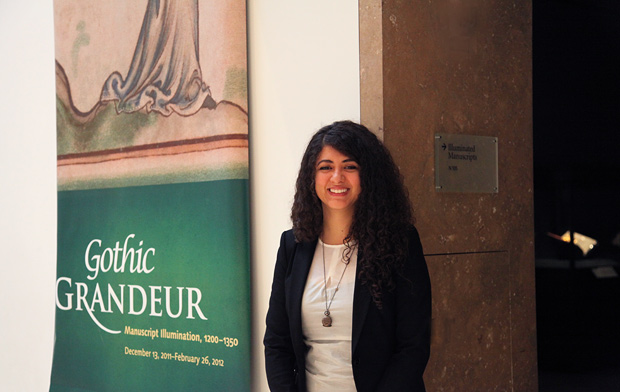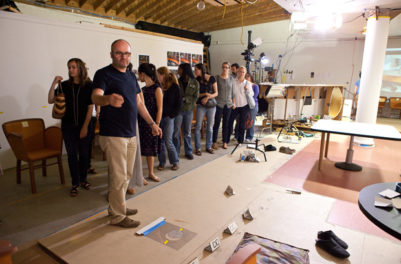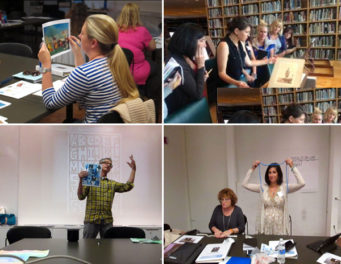
My relationship with the Getty began when I was still an undergrad studying architecture and the history of art. As a junior I applied for the Multicultural Undergraduate Internship offered by the Getty Foundation, and was thrilled to receive an internship with the Manuscripts Department at the Museum.
There was only one problem: I didn’t know much about manuscripts.
My education in this art tradition started on day one, as I began an intensive exploration of the Getty’s outstanding collection. The collection focuses primarily on western medieval manuscripts but embraces a variety of rarities ranging in period and geography from a 10th-century Coptic devotional leaf to an illuminated British storybook from the early 20th-century.
The internship provided me with an intimate look at this fascinating medium, and gave me a behind-the-scenes glimpse at how a museum operates. I worked with the large group of people who work collaboratively to put on an exhibit. I learned more about our artworks through conversations with the manuscripts conservator and the Getty Conservation Institute scientists who also work on them. And I helped piece together bits of content for a variety of exhibitions.
A little more than a year after my internship, the Manuscripts Department had an opening for which I applied, resulting in the opportunity for me to return as a curatorial assistant. I’ve been involved in a variety of projects in our busy group, including co-curating the show Gothic Grandeur: Manuscript Illumination, 1200–1350.
In my current post, I refer to the introductory knowledge of manuscripts my internship offered two summers ago. More importantly, however, I draw on the opportunity it gave me to put the pieces of my experiences together, combining the academic subjects I studied at college with the real-world roles I’ve played at the museum.
As another group of students submits applications for the Multicultural Undergraduate Internship (the deadline for the 2012 program is February 1), I realize that I didn’t necessarily need an extensive background in manuscripts to benefit from my internship here. I just needed the willingness to jump into something new, the chance to consider all the pieces of my studies and career, and the freedom to put them together.




Comments on this post are now closed.